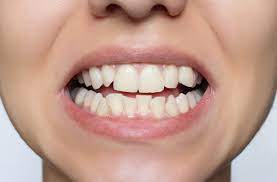
Sometimes, veneers can be used for crooked teeth
Veneers are a popular cosmetic dentistry solution for addressing various aesthetic dental issues, but their effectiveness for crooked teeth depends on the severity of misalignment. Made from thin layers of porcelain or composite resin, veneers are bonded to the front surface of the teeth to enhance their appearance. While they cannot correct the underlying alignment of the teeth, they can create the illusion of a straighter, more uniform smile in cases of mild misalignment.
Dentists must determine whether the veneer would have an aesthetic effect or make more of the problem visible.
Before deciding on veneers for crooked teeth, a dentist must evaluate whether they will enhance the smile’s harmony or inadvertently emphasize alignment problems. For instance, if the misalignment is too pronounced, veneers might not effectively mask the asymmetry and could even highlight discrepancies. Additionally, the application of veneers requires the removal of a small amount of enamel, so the dentist must ensure that the benefits outweigh the risks in such cases.
It is best to consult with a cosmetic dentist before receiving any orthodontic treatment.
Seeking advice from a skilled cosmetic dentist is essential when considering veneers for crooked teeth. They will assess your specific dental condition and advise whether veneers are the right solution or if orthodontic treatments, such as braces or aligners, may be more suitable. Sometimes, combining orthodontics with veneers is the optimal approach to achieve both functional alignment and aesthetic improvement. A professional consultation ensures informed decision-making and results tailored to your smile’s unique needs.
FAQs
Your dentist will evaluate your bite and overall dental health to determine whether a veneer treatment would be appropriate for your crooked teeth. If the correction is deemed feasible, they will provide you with a detailed treatment plan, including an estimated cost and expected outcomes.
If you want to address a minor issue with your smile, such as slightly crooked teeth, but don’t require a major transformation, a more conservative veneer treatment might be the right choice. Consulting with a dental professional can help you decide what works best for your specific needs.
There are two main types of veneers—composite and porcelain-fused-to-metal (PFM). Composite veneers are crafted from durable plastic materials and are available in various shades and textures. On the other hand, PFM veneers are made from natural materials, like tooth enamel and bone, offering a more lifelike appearance and long-lasting durability.
Veneers are custom-designed shells made from porcelain or composite resin to cover and smooth over dental imperfections. When dealing with crooked teeth, veneers can be carefully applied to either intact teeth or teeth that are slightly rotated or misaligned to enhance the appearance of an even smile.
